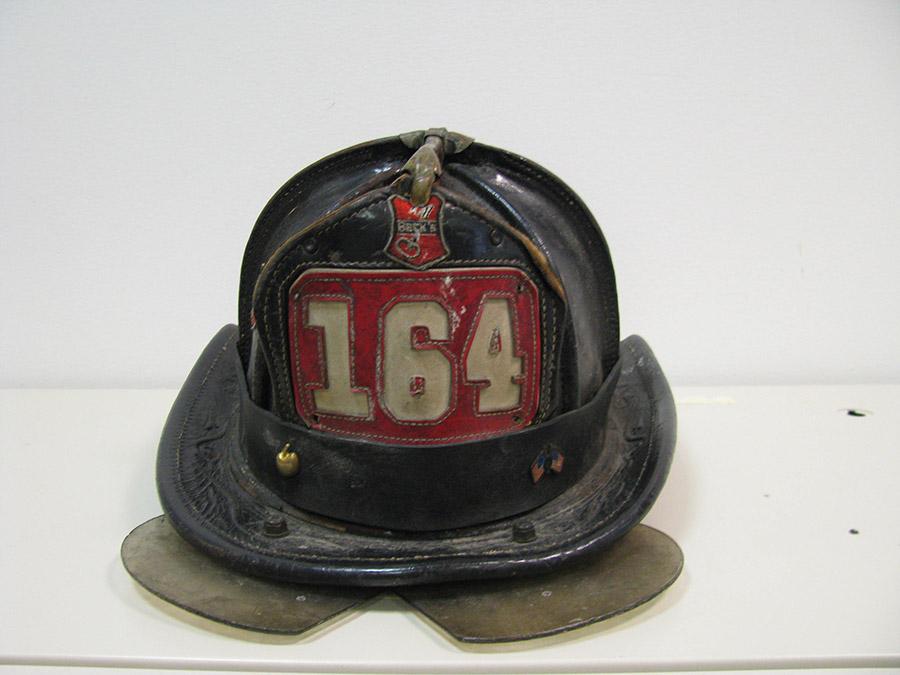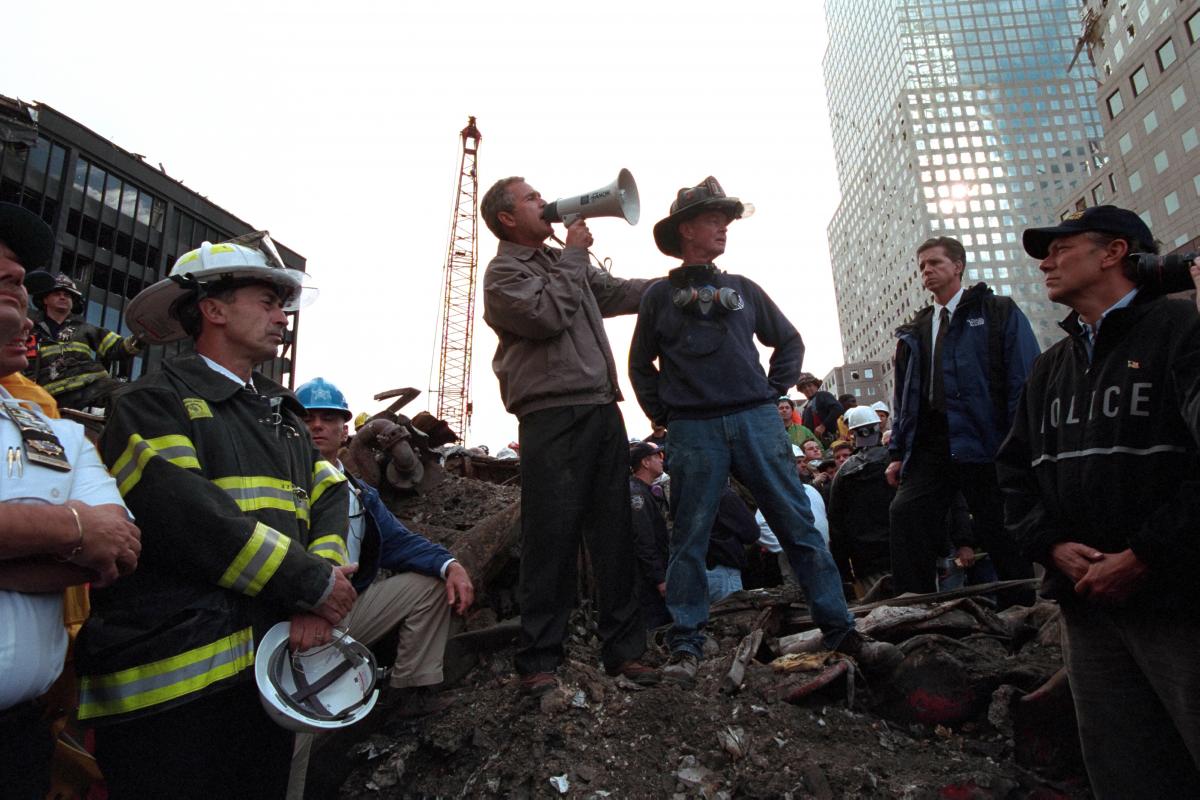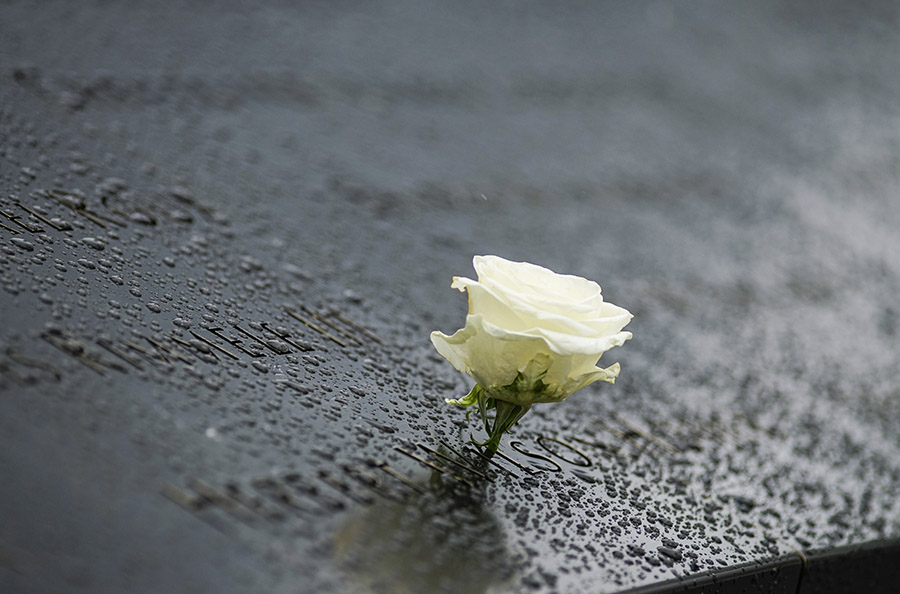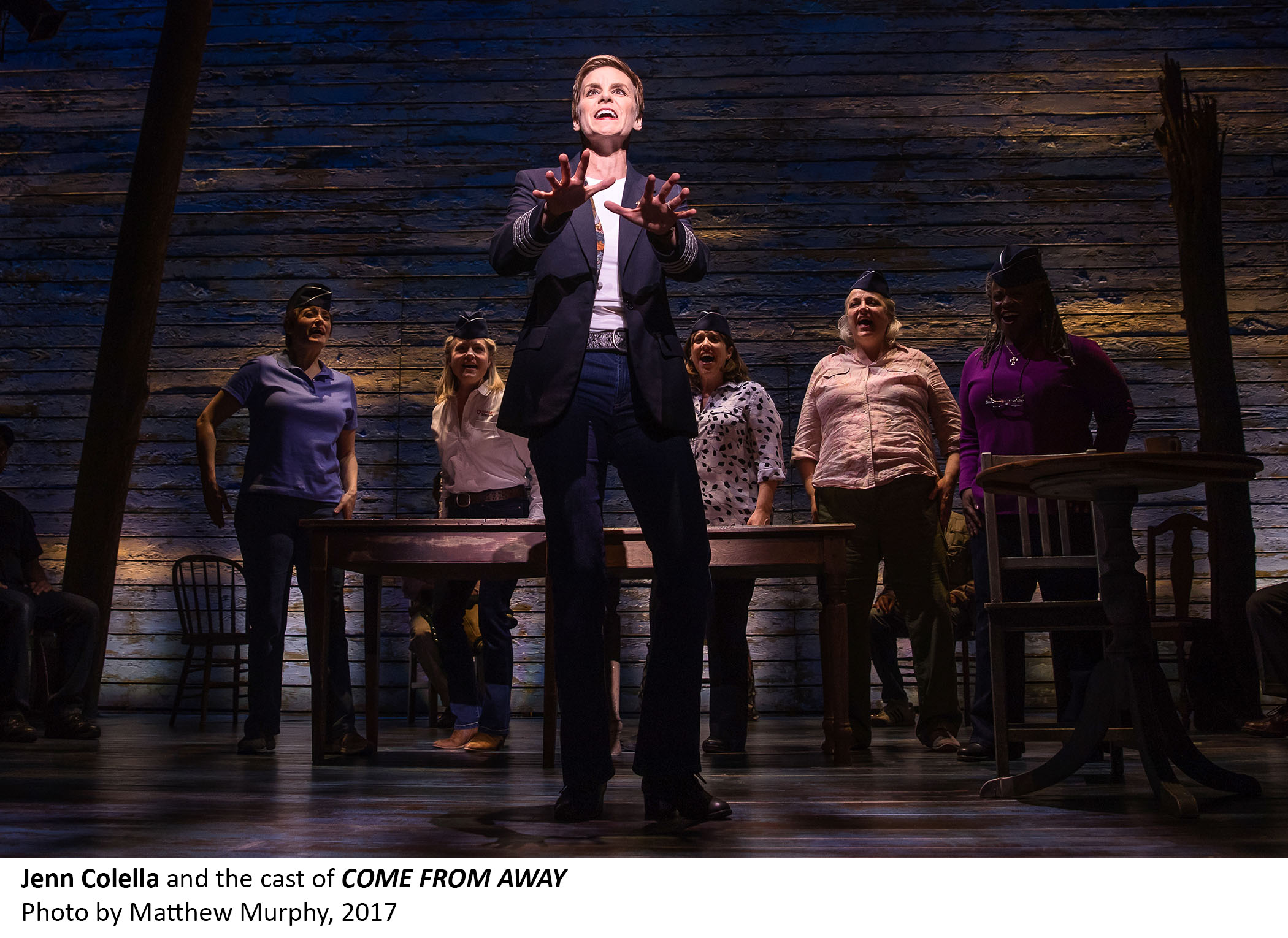New On View: Bob Beckwith’s Helmet
New On View: Bob Beckwith’s Helmet

After watching the Twin Towers collapse on television from his home on Long Island, retired firefighter Bob Beckwith made plans to help with the search efforts. Three days later, on Sept. 14, the 69-year-old drove to lower Manhattan, following police cars across the Williamsburg Bridge in lanes blocked off by orange cones.
Because he was dressed in his old gear, including his leather fire helmet from Ladder Company 164, he convinced both members of the NYPD and National Guard that he was late for duty and was granted access to ground zero. Once on site, he went to work on the bucket brigade, as the lines of first responders who stood shoulder to shoulder, manually handing off buckets debris in the search for survivors, came to be known.
The crew he joined managed to unearth FDNY Engine 76. As they searched for the truck’s chauffeur, as firefighters refer to the person who drives the fire truck, Beckwith overheard that President George W. Bush would be visiting the site shortly.
He jumped onto the fire truck to get a good view of the command post where the president was expected to speak. A person Beckwith thought was a Secret Service agent – and later identified as White House Deputy Chief of Staff Karl Rove - approached the truck and asked Beckwith to jump up and down to prove that the wreckage was safe to climb. He complied, and was surprised to see the president soon climbing up onto the vehicle.
 With his arm around Beckwith, the president began to deliver his remarks to the rescue workers. A few of them began to shout that they couldn’t hear President Bush, who used a bullhorn to declare, “I can hear you, the rest of the world hears you, and the people who knocked these buildings down will hear all of us soon.”
With his arm around Beckwith, the president began to deliver his remarks to the rescue workers. A few of them began to shout that they couldn’t hear President Bush, who used a bullhorn to declare, “I can hear you, the rest of the world hears you, and the people who knocked these buildings down will hear all of us soon.”
These inspirational words from the nation’s leader energized the group around him and reinforced America’s resolve in the aftermath of the attacks.
Unbeknownst to Beckwith, this historic moment had been recorded by the media and was broadcast by news stations across the globe. Among the thousands of viewers were members of Beckwith’s former fire company, who contacted him and asked that he cease participating in the rescue and recovery efforts out of concern for his age.
Though Beckwith only spent one day at ground zero, the helmet he wore remains a resonant artifact and a symbol of both the heroism of the rescue workers and a moment in history where the nation vowed to take action. The helmet is now on display in the 9/11 Memorial Museum’s historical exhibition.
By Emily Edwards, Collections and Exhibitions Coordinator
Previous Post
9/11 Memorial & Museum Launches Birthday Rose Program for Family Members

Every day, a single, white rose rose is placed on the 9/11 Memorial pools at the names of the victims whose birthdays would have been celebrated on that day.
Next Post
‘Come From Away’ Tells Story of Compassion

In the uncertain hours immediately following the September 11 attacks, the U.S. Federal Aviation Administration halted all commercial and general aviation air traffic, clearing the airspace of an estimated 4,500 planes.